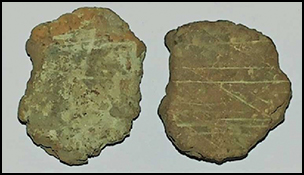Article contents
Patterned and plain baked clay from pre-pottery contexts in Southeast Sulawesi, Indonesia
Published online by Cambridge University Press: 20 September 2019
Abstract

Excavations of pre-pottery levels at Gua Talimbue and Gua Sambagowala in Southeast Sulawesi, Indonesia, have yielded nearly 4kg of baked-clay fragments, half of which exhibit intentional patterning. The fragments appear to derive from clay hearths. Here, the authors link the patterning on Early Holocene (c. 9900–8800 cal BP) fragments with the intention to enhance the appearance of the hearths’ rims. During the Mid/Late Holocene (c. 4500–2000 cal BP), patterning shifts to the interior surfaces. The effort and specialised skills required to impress patterns on these hearths is, to date, unique in the archaeology of pre-Neolithic Island Southeast Asia.
- Type
- Research
- Information
- Copyright
- Copyright © Antiquity Publications Ltd, 2019
References
- 2
- Cited by




